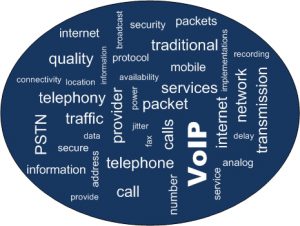IP is everywhere – Just  look around you
look around you
Booking a flight or a hotel, buying a DVD, checking your stock market price, watching a video – nearly everybody uses Internet, Mail, SMS or other services which are based on IP technology. Even if you make a call with your home phone you use IP technology, because most telecom providers employ IP exchange technology in their backbones.
These days, we are surrounded by IP technology everywhere we look – almost nothing in our technical world would work without it.
IP – What’s it all about?
IP is short for Internet Protocol and is part of a so-called protocol stack. This ‘stack’ – Transmission Control Protocol / Internet Protocol (TCP/IP) – is responsible for transport, interpreting and processing of data on physical media, for example.
Different layers are stacked to handle and interface between hardware, protocols, transport and applications.
Industrial Communication – Now and then…
Until now, traditional industrial communication has been managed e.g. with dedicated cables in star topology. Each end device is connected directly to the central exchange.
Field devices can be 2 miles or more apart using just one twisted pair cable – data, audio and power included. All connections are exclusive, guaranteed and immediately established.
In other words: You have your own ‘cable network’, your own devices – everything is under your control and simple.
…now and in future
IP technology took its place in industrial communication about 10 years ago. First slowly, but its popularity has increased rapidly in recent years. The technology is mostly reliable and usable in many applications.
If all these necessary parameters for optimal output are provided at customer side, the network performance is as good as the old-fashioned dedicated star wired cabling.
…but
Keep in mind that CAT cables and PoE can only cover distances of 100 meters (328 ft.). That means your infrastructure, like switches, power supplies, etc. must be much more decentralized and well distributed.
Network infrastructures must be protected against failures or a single point of failure with redundant structures or other actions.
With a VLAN you establish a secure connection within an IP network. You are able to guarantee bandwidth, jitter and other parameters, but there is also a risk to get this VLAN corrupted by DDOS attacks or disturbed by other impacts.
What can we learn from this?
IP technology is already an integral part in our real world and in fact a good solution in many situations and applications. This is also true for IP industrial communication if all constraints are observed.
If everything counts, then a ‘State-of-the-art Industrial Communication System’ will combine the best of both worlds:
- IP technology for modern end devices
- IP technology for latest protocols, like Modbus TCP or SIP
- IP technology for wide data paths connecting central systems
- ‘Old-fashioned’ digital technology for long range connections
- ‘Old-fashioned’ digital or analog technology for connecting existing equipment
So only a hybrid system can satisfy user demands in all applications and under very diverse industrial conditions – especially if you take into account the costs for a reliable system.